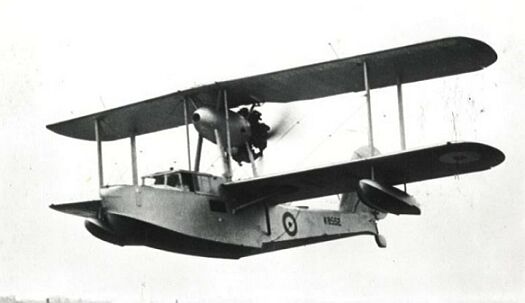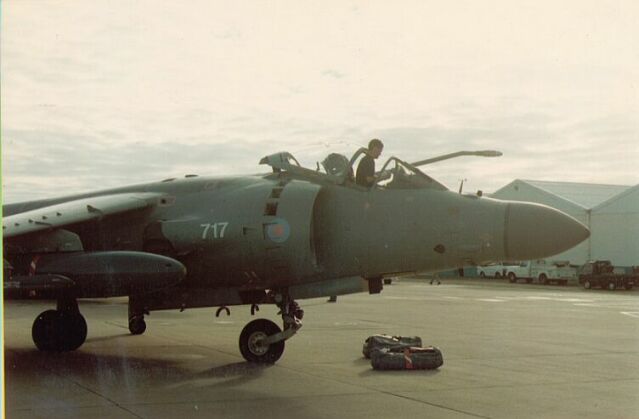
The primary duties at HMS Malabar consisted of building up crated sea-planes, servicing and repairing and, when necessary, replacing aircraft from the fleet. These were primarily Sea Fox and Ospreys, then Walrus seaplanes and flying boats used for artillery spotting, reconnaisance and opportunistic attack roles.
This facility was far too limited, and placed in the busiest part of the base. It was decided to relocate it to Boaz Island, one of the under-used appendages to the Ireland Island facility. Here, two slipways were built, allowing the use of the Great Sound or the open waters to the West, depending on wether the winds blew from West or East. Two hangars were also built, and a workshop, though the full plans for the facility were never realized.
The RAF handed operations over to the Navy on 3rd September, 1939-co-incidental with the re-location to Boaz Island ( and the same day volunteer units were mibilized in preparation for declaration of war on 8 September). Some Raf personnel were to remain until 1940 when 718 Squadron was disbandded and the remainder of its personnel were posted elsewhere.
The cruisers HMS Ajax and Exeter which took part in the Battle of the River Platte, did so with aircraft serviced at this facility, having sailed from Bermuda before meeting the Graf Spee in December of that year.
Although primarily intended as a maintainance facility, on the advent of war, the FAA at Boaz Island found themselves tasked with more active roles. Although RAF Transport Command was soon flying large numbers of Catalina maritime patrol aircraft through the colony at RAF Darrell's Island, the FAA were to provide the only aerial patrols of the surrounding Atlantic until the establishment of a US Naval Kingfisher unit on the colony in 1941. They flew target towing sorties for ship and shore based AA guns, maritime reconnaissance and, most critically, anti-submarine patrols.
As the island quickly became a major form-up point for trans-Atlantic convoys, U-Boats were a constant menace. Establishing regular patrols proved to be very difficult as RNAS Boaz Island lacked its own aircrew. Patrols were flown with whatever pilots were on hand, including aircrew from the two RAF Commands at Darrell's Island, and pilots from the Bermuda Flying School. The Chief Flying Instructor of the BFS, Captain Edward Stafford, a US citizen flew a number of such patrols in the navy's Walrus amphibians, as did other local pilots. (when the BFS was closed down in 1942 due to a surplus of aircrew, Ed Stafford joined the RAF Ferry Command. Shot down, he was captured by the Germans and not liberated 'til 1945)
In May of 1942, the last FAA assets on Ireland Island moved to Boaz Island, which was now, technically, RNAS, Bermuda (HMS Malabar II--though it had been preceded by at least four or five others of that name.)
The FAA would lose a number of aircraft in the colony over the years, though primarily from visiting vessels.
There is still an FAA Swordfish floatp[lane sitting at the bottom of the Great Sound. A Skua divebomber crashed on the Port Royal golf course after a sudden drop in wind speed prevented her returning to HMS Illustrious, anchored in the Sound, and a Walrus met her end in the Great Sound.
No action would be seen from this base, however (though the presence of its aircraft overhead may well have thwarted German attacks on vessels in these waters.) With the pacification of the Atlantic, and the entrance of the United States into the war,with the build up of its air bases on the island, the FAA facility became somewhat superfluous and was placed on a 'care and maintainence' footing in April, 1944. It was never re-opened, but was used for a time, after the war, by civil float plane operators.
"The Andrews And The Onions", by Lt. Commander Ian Strannack
"The Flying Boats Of Bermuda", by Colin A. Pomeroy
